Did you know your dog’s adorable fluff could be a secret allergy weapon? Yep, that cuddle buddy might be packing more than just love—think dander bombs.
Pet allergies affect up to 20% of the global population, and yet we still let them sleep in our beds. Call it love, call it denial—but we’ve all been there, itching and sneezing through the snuggles.
You might think only long-haired dogs cause trouble, but surprise: some of the biggest offenders are sleek, short-coated charmers. Allergens don’t discriminate—they cling to fur, saliva, and even your couch.
Pop culture rarely talks about it, but allergic pet parents are on the rise. With more people working from home, exposure has skyrocketed—and so has the need for smarter breed choices.
Ready to find out which breeds might be triggering your sniffles—and what you can do about it? Let’s dive nose-first into the fluffiest mystery you didn’t know you were living.
9 Allergy-Prone Dog Breeds
1. Labrador Retriever
Ah, the Labrador Retriever—America’s sweetheart and, secretly, your sinuses’ worst enemy. Bred for retrieving ducks in icy waters, this pup has a double coat that sheds more than your ex’s excuses.
This lovable goofball comes with a genetic predisposition for recurrent ear infections and atopic dermatitis. Basically, if you’re not itching, they might be—solidarity, right?
AKC reveals that Labs also love to eat…everything. Which means they’re prime candidates for food allergies and gastrointestinal problems. If your dog eats socks and breaks out in hives, well, welcome to Labrador life.
Their waterproof coat is great for swimming, but also traps environmental allergens, dust mites, and probably yesterday’s pollen count. Brush them regularly unless you want to live in a snow globe of pet hair.
Watch for signs of itchy skin or irritated skin, and consider allergy testing if your pup’s scratching like it’s a full-time job.
Feeding them a prescription diet with salmon oil can help soothe their sensitive skin and reduce skin problems. Bonus: It makes their coat shiny enough to blind neighbors.
Fun fact: Despite the fluff-fest, Labs are somehow still listed among the most popular dog breeds, proving we’ll put up with anything for those puppy eyes.
2. German Shepherd
The German Shepherd: half police officer, half walking allergy symptom. Built like a legend, but sheds like a myth gone horribly wrong. Their double coat practically manufactures its own weather system.
These majestic floofs are intelligent, loyal, and high-maintenance drama queens when it comes to skin irritation and inhalant allergies. Blame their genetic predisposition for all that itchy skin and dry skin.
Their thick coat traps everything—airborne allergens, dust mites, even your will to vacuum. Grooming them isn’t optional; it’s a lifestyle. Like CrossFit, but furrier.
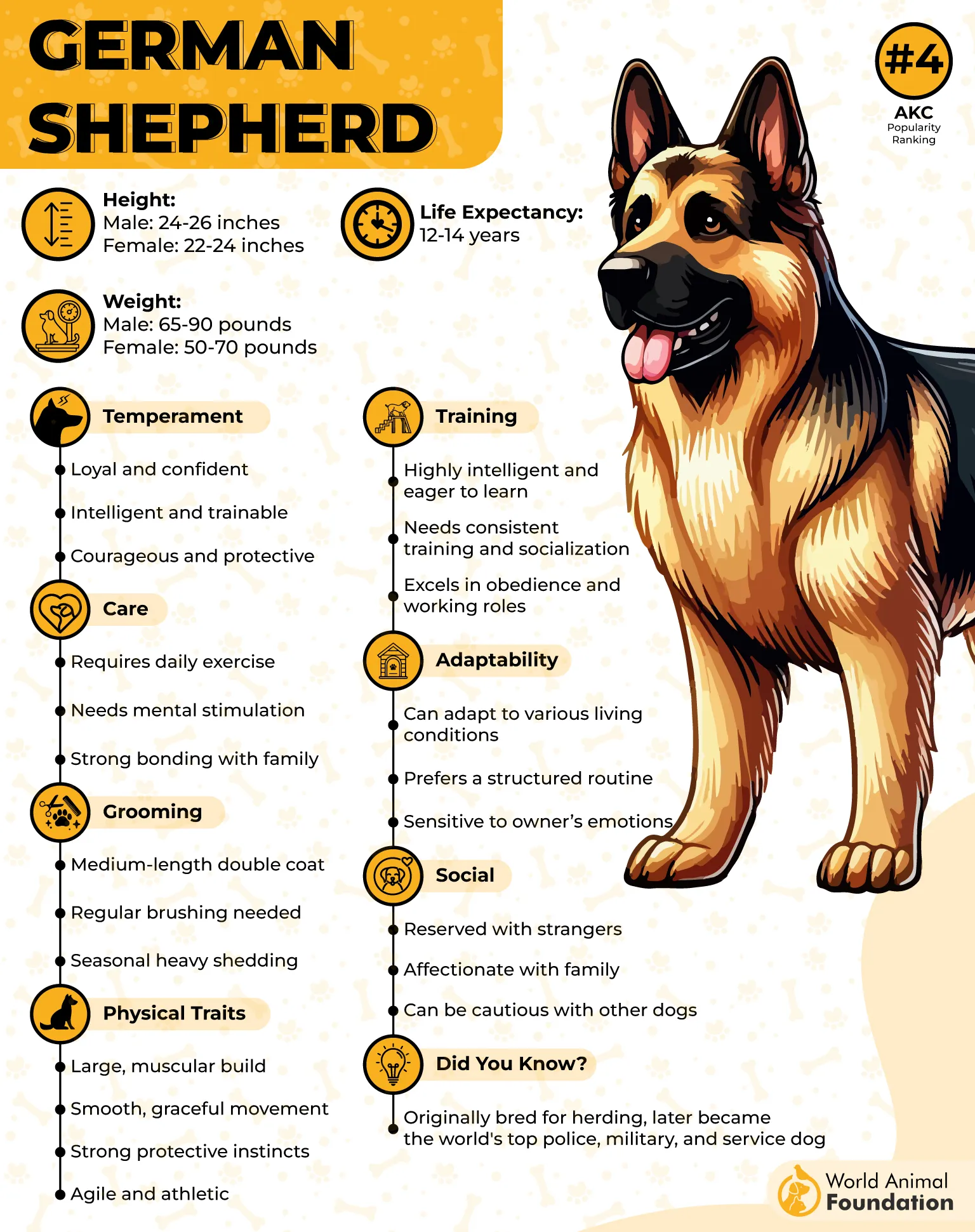
Their sensitive skin means even cleaning products can spark allergic reactions. And if their dog’s skin turns red after a walk? It could be environmental factors, could be a conspiracy. Probably both.
For real relief, keep their coat clean, invest in a HEPA filter, and maybe move to the Arctic. Also: allergy shots exist—for them and for you.
They’re prone to secondary infections if scratching goes unchecked, so don’t wait for the zombie leg shuffle before seeing a vet.
Fun fact: Despite their flair for canine atopic dermatitis, they still made it to K-9 fame. Because nothing says “elite unit” like needing a medic after a dust bunny.
3. Golden Retriever

Golden Retrievers: sunshine with a tail… and a side of flea allergy dermatitis. Their golden fluff lights up rooms—and triggers allergy flares like clockwork.
Their thick, more hair than sense coat makes them adorable, and also a roaming cloud of indoor allergens. Yes, the dander is real. And yes, it’s everywhere.
With their love for rolling in grass and everything gross, environmental allergens become a daily feature. They’re also poster pups for common food allergies, so don’t be surprised if chicken equals chaos.
Golden’s sweet nature comes with sensitive skin and recurrent ear infections that require near-professional care. One week without ear wipes and you’re in bacterial infection territory.
To help: regular baths with vet-approved shampoo, brushing like it’s a second job, and maybe cutting out certain foods. Oh, and hide the cheese.
PetMD warns that keep an eye out for itchy eyes, flaky skin, or random zoomies fueled by discomfort, not joy.
Fun fact: These lovable goldies are one of the least hypoallergenic dog breeds—but that doesn’t stop us from falling for the fur every single time.
4. American Pit Bull Terrier

The American Pit Bull Terrier: misunderstood, muscle-packed, and surprisingly prone to skin allergies. That short coat? A false sense of security.
Despite their tough image, these pups have sensitive skin that reacts to contact allergies, insect allergies, and your scented dryer sheets. Basically, if it smells nice, it’s a threat.
They’re known to develop allergic reactions to certain breeds of grass (yes, really), flea bites, and even airborne allergens. Plot twist: they’re the action hero with hay fever.
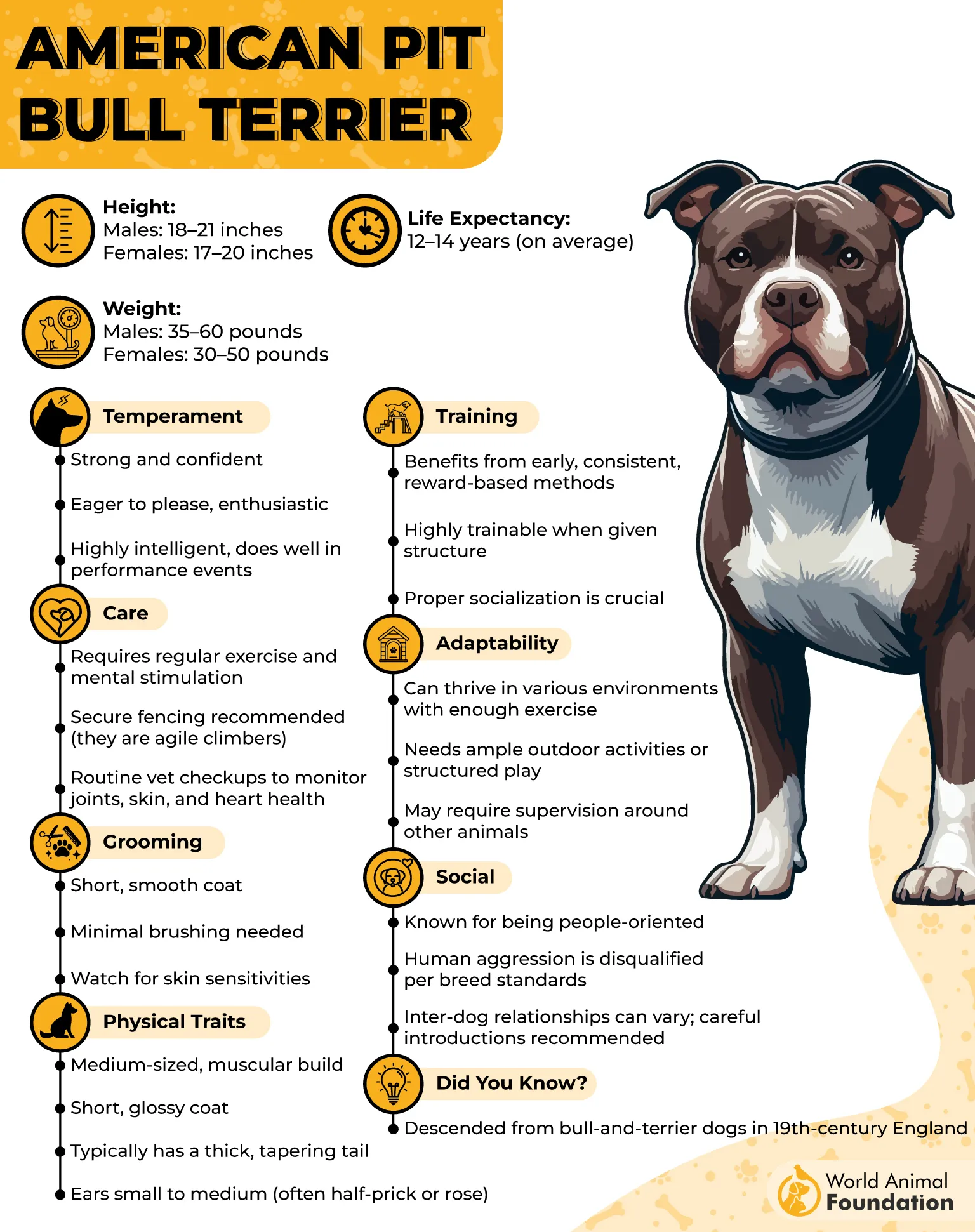
Their immune response can spiral into canine atopic dermatitis, complete with all the drama—irritated skin, hair loss, and spontaneous full-body scratching.
To help, bathe them with medicated shampoo, switch to a prescription diet, and keep those flea allergy dermatitis risks at bay with year-round protection.
If your Pitty looks like it’s breakdancing on the rug, it might be time for allergy testing. Or a talent show. Maybe both.
Fun fact: Despite their higher risk of skin problems, Pit Bulls remain some of the most resilient, loving companions. Just add antihistamines.
5. Bulldog

Ah, yes, the Bulldog—wrinkly, snorty, and basically a walking petri dish for skin problems. Their folds trap everything: moisture, dirt, and your regrets.
They’ve got the trifecta: sensitive skin, food allergies, and atopic dermatitis. If their skin’s not red and itchy, they’re probably just asleep. Or plotting.
Those signature rolls? Cute until you realize they’re breeding grounds for bacterial infections and secondary infections. Clean them like your life (and nose) depends on it.
Britannica explains that their immune system loves overreacting to certain foods, flea bites, and environmental allergens. You name it, they’ll itch to it.
Pro tip: keep them on a prescription diet, use non-irritating grooming products, and wipe every fold like it owes you money.
Also, they don’t shed a ton, but their dog hair is coated in enough allergen potential to send your sinuses packing.
Fun fact: Despite their allergy symptoms, Bulldogs are beloved couch potatoes—just make sure your couch doesn’t turn into a biohazard.
6. French Bulldog
The French Bulldog: fancy, fabulous, and full of allergic reactions. They look like they came out of a designer store and straight into a cloud of dust mites.
Short hair doesn’t mean low allergy risk. In fact, their sensitive skin is like a siren call for contact allergies and environmental factors.
Their bat ears? Adorable until you’re spending half your life managing recurrent ear infections. Yes, they come with built-in mood swings and vet bills.
They often suffer from canine atopic dermatitis thanks to a genetic predisposition—because why stop at being adorable when you can also be high-maintenance?
Frenchies also have a flair for reacting to certain foods and even inhalant allergies. Basically, they can sniff trouble… and then develop hives from it.
To help minimize exposure to airborne allergens, avoid cheap shampoos, and don’t trust your gut—trust allergy testing.
Fun fact: They may be allergy-prone, but they’ll guilt you into cuddles even if you’re sneezing into oblivion. Oui, it’s worth it.
7. Bull Terrier

If a football had legs and opinions, it would be the Bull Terrier. Charming? Yes. Allergy-prone? Also yes. Their skin allergies are sneakier than their headbutts.
That slick, short coat might fool you, but it’s a highway for pet hair, irritated skin, and flea allergy dermatitis. Basically, it’s smooth until it isn’t.
They’re magnets for allergic reactions—to certain foods, insect allergies, and whatever weird plant they just rolled in. Their immune system really keeps things spicy.
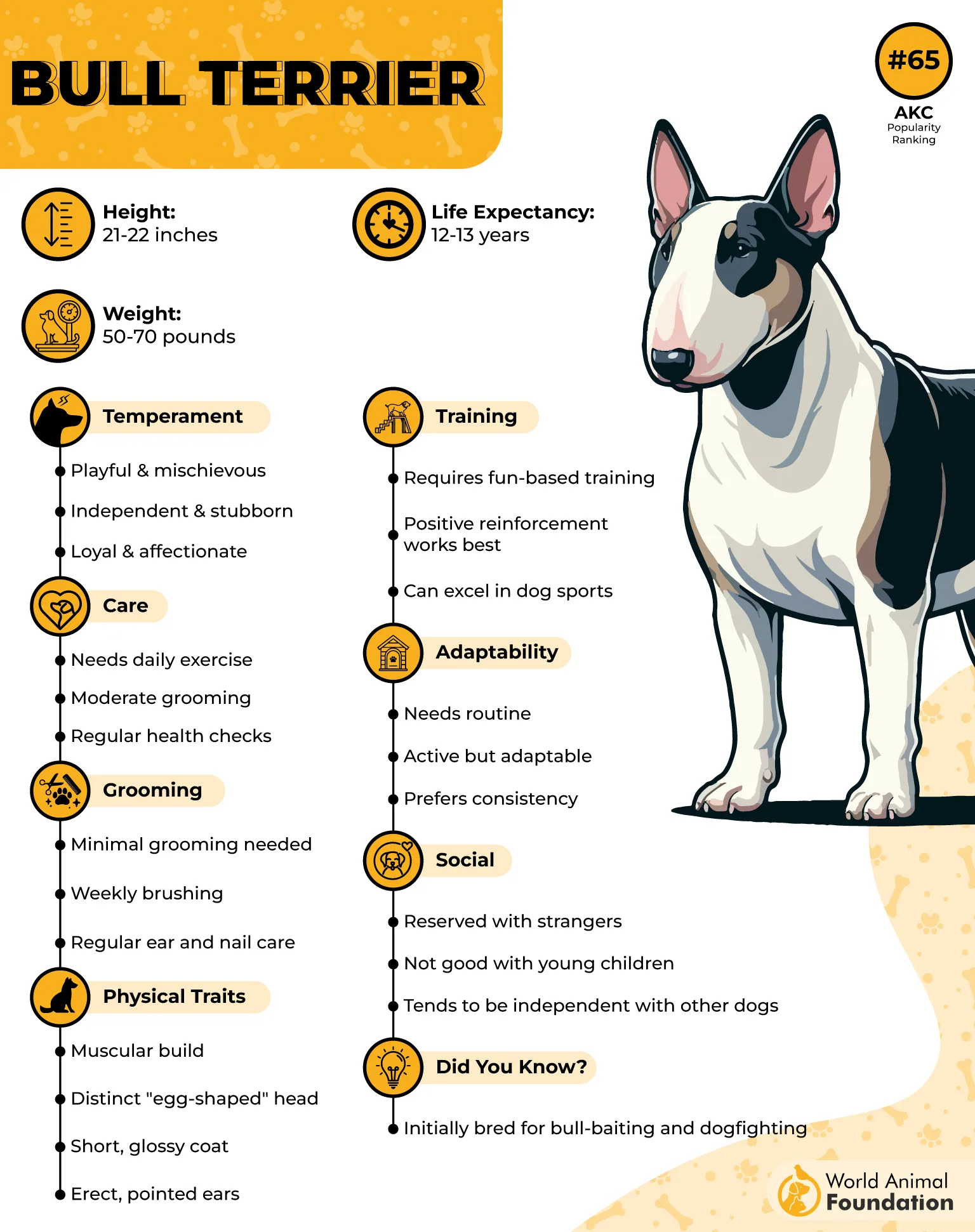
PDSA reports that they often suffer from dry skin, itchy eyes, and dramatic displays of discomfort. Cue the floor-scooting. It’s not a vibe, it’s a warning sign.
Maintenance tip: bathe them regularly (yes, they’ll hate you), feed them a prescription diet, and avoid sketchy treats from that one aisle in the pet store.
Watch out for hair loss and random scratching fits. If it looks like interpretive dance, it might be atopic dermatitis.
Fun fact: They may look like tiny tanks, but inside? They’re delicate little snowflakes with a flair for skin drama.
8. Dalmatian

Dalmatians: fashion icons of the dog world… and also allergic to basically everything except attention. Their sleek spots hide a world of skin allergies and contact allergies just waiting to happen.
These drama queens have sensitive skin and an uncanny ability to find the one allergen you missed during spring cleaning. Think airborne allergens, cleaning products, and betrayal.
They’re known to develop canine atopic dermatitis, made worse by their flair for sunbathing like they’re on vacation in Ibiza. Cue the irritated skin and vet bills.
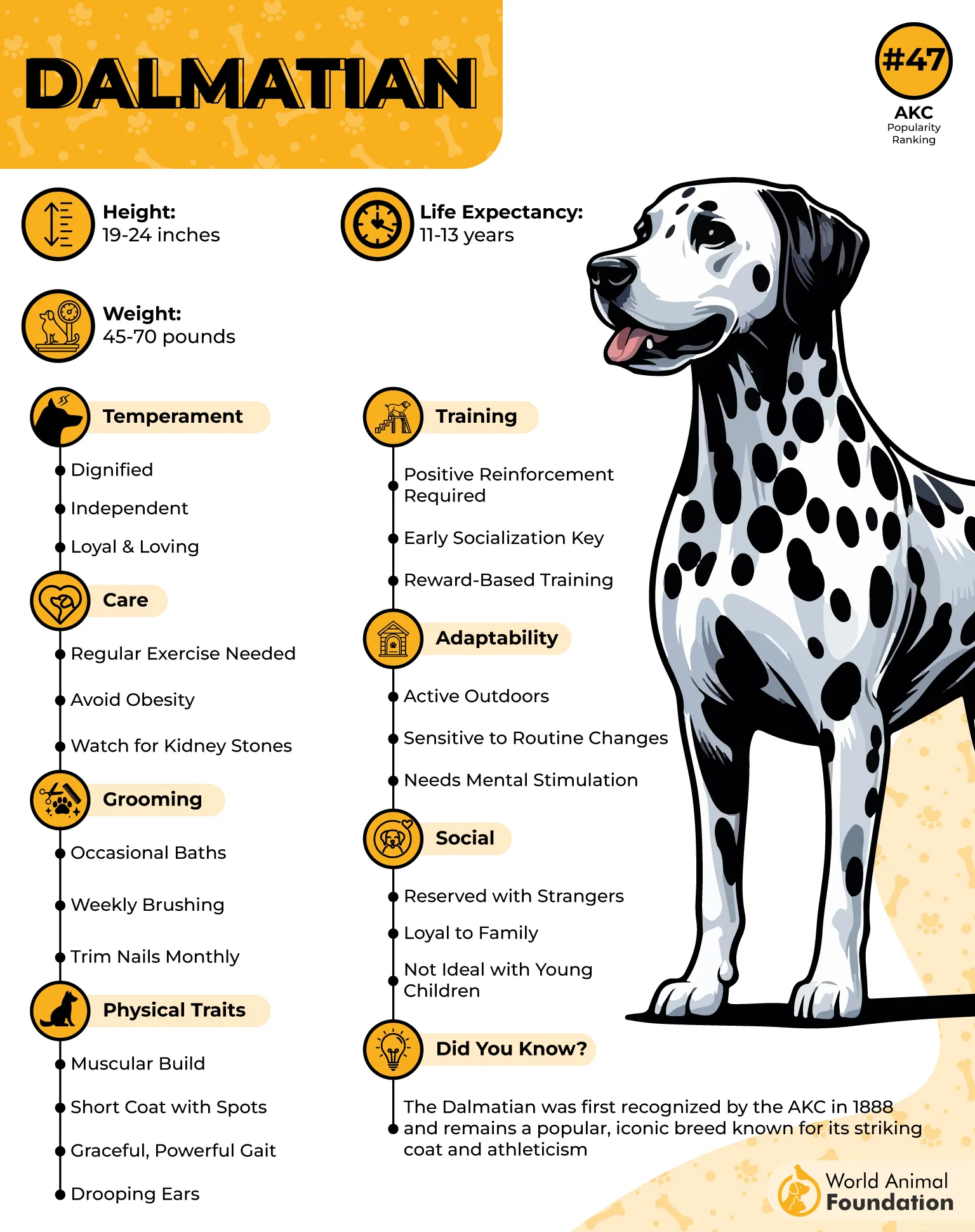
Oh, and food allergies? They’ve got those too—especially to certain foods high in purines, which makes them extra-special when planning meals. Good luck with that.
You’ll need regular baths, minimal dust mites, and a prescription diet to keep them from transforming into a walking rash.
They’re also prone to flea allergy dermatitis, so stock up on prevention like it’s Black Friday.
Fun fact: These stunning dogs are deaf in one or both ears more often than not—but when it comes to allergy symptoms, they hear us loud and clear.
9. Cocker Spaniel

Cocker Spaniels: elegant ears, soulful eyes, and a secret vendetta against your sinuses. They’re basically allergy delivery systems with eyeliner.
Their long, silky coat traps environmental allergens, pet hair, and crumbs from snacks they absolutely weren’t supposed to have. So glam. So sneezy.
They’re a perfect storm of recurrent ear infections, atopic dermatitis, and skin irritation. Those gorgeous ears? Moisture magnets with a PhD in mold and misery.
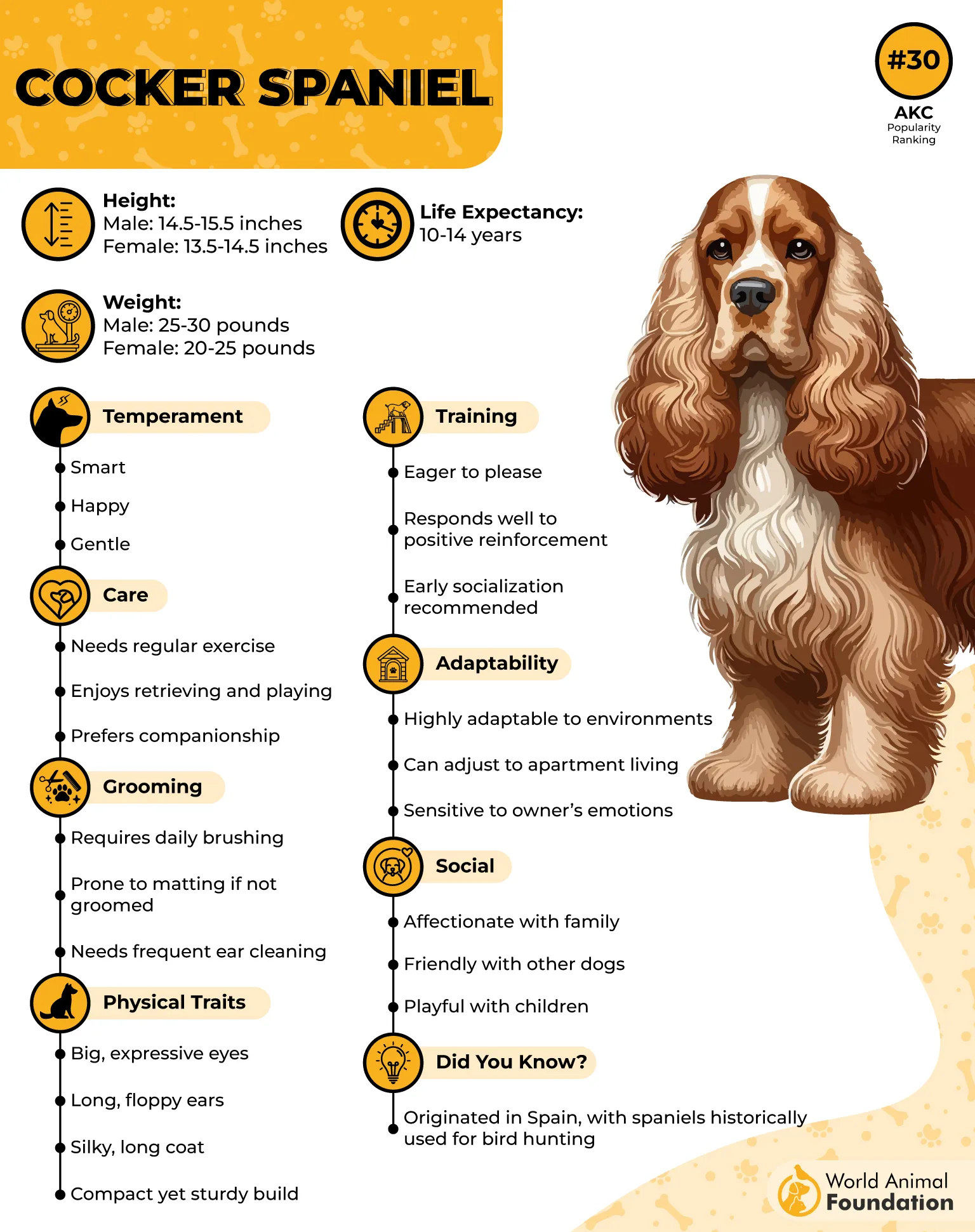
Their sensitive skin also reacts to common food allergies, so expect a feeding routine more complicated than a celebrity detox plan.
Keep them brushed, bathed, and far away from sketchy grasses and bargain-brand shampoo. Or don’t—just prepare for the scratch fest of the year.
Allergy testing is practically a rite of passage for this breed. And yes, they will look adorable at the vet while you weep at the invoice.
Fun fact: They were America’s favorite dog in the ’40s and ’50s—back when we were fine with sneezing as long as it was fashionable.
Final Thought
So there you have it—some of the fluffiest culprits behind your mid-scratch existential crisis. Turns out, the cutest dogs are also the itchiest. Coincidence? We think not.
From sniffles to scratchathons, dog allergies can be triggered by a mix of various factors, not just fur, but also food, fleas, and even your favorite cleaning spray.
Don’t worry, though—being prone to allergies doesn’t mean you need to give up your dream dog. Just brush your dog regularly, stay alert to your dog’s symptoms, and embrace a vacuum like it’s your new best friend.
Still sneezing at the thought? While any dog can develop allergies, these hypoallergenic breeds like the Bichon Frise, Portuguese Water Dog, or the sassy Boston Terrier might just save your sinuses.
And let’s not forget other breeds like the West Highland White Terriers with less dander and a whole lot of attitude. Allergy-friendly doesn’t mean boring.
Know a fellow dog owner knee-deep in tissues this allergy season? Share this guide and help them protect their pup’s overall health—and maybe their own sanity too.


